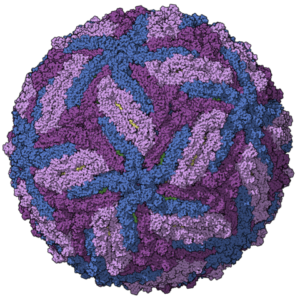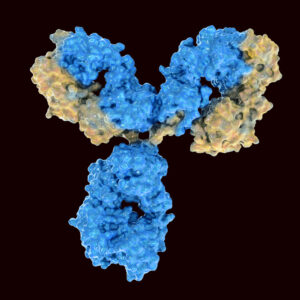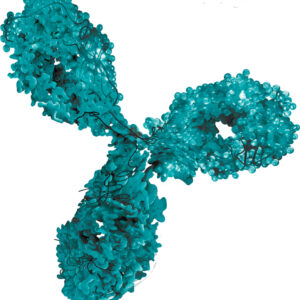Powassan Virus
Powassan virus is spread to people by the bite of an infected tick. Although considered rare, the number of reported cases of people sick from Powassan virus has increased in recent years. People with severe Powassan disease often require hospitalisation for support with breathing and swelling in and around the brain.
At The Native Antigen Company, we prepare recombinant Powassan NS1 antigen in our mammalian expression system to facilitate development of assays for viral detection
Powassan Virus Background
Powassan virus (POWV) is a positive-sense, single-stranded RNA virus that belongs to the genus Flavivirus, a member of the Flaviviridae family. Powassan is an arthropod-borne virus, transmitted by infected ticks to small/medium-sized mammals, which act as reservoirs. Different tick species transmit POWV including hard ticks, of the family Ixodidae, though species vary according to the geographical region. POWV can also be transmitted to humans, which are incidental, dead-end hosts for the virus (Hermance ME, et al).
POWV is classified as a member of the tick-borne encephalitis sero-complex of flaviviruses. Two genotypes, or lineages, of POWV have been identified in Russia and the Western hemisphere. POWV is assigned to lineage I and Deer tick virus (DTV), to lineage II. Serologically the two viruses are indistinguishable, but have some phylogenetic differences. Both lineages have been linked to human disease. Cases of POWV infection caused by POWV lineage II (DTV) are reported to be increasing in North America. The virus is transmitted by the tick Ixodes scapularis, which is also the vector for Lyme disease. The expanding distribution of Ixodes scapularis and the high seroprevalence of DTV in small mammals in endemic regions, suggests that POWV may pose a growing threat to public health.
First recognised as a human pathogen in 1958, POWV is the cause of a rare neuroinvasive disease. In humans, the incubation period can vary between 1 – 5 weeks. In many cases, individuals remain asymptomatic or may present with a febrile illness of mild fever, sore throat, headache, drowsiness and disorientation. Some patients develop neurological complications, which include encephalitis, aseptic meningitis and meningoencephalitis. Reports suggest that 10% of POWV cases are fatal and 50% of survivors develop long-term neurological problems, which include acute headaches, muscle wasting and memory problems (CDC).
Currently, there is no antiviral therapy for the treatment of symptomatic cases of POWV, and no licensed prophylactic vaccine to prevent POWV infection. Diagnosis of POWV in humans is achieved using clinical criteria and serological methods to measure Powassan-specific IgM levels of infected patients.
References
- Hermance ME and Thangamani S. (2017). Powassan Virus: An Emerging Arbovirus of Public Health Concern in North America. Vector Borne Zoonotic Dis. 1; 17(7): 453–462.
- Center for Disease Prevention and Control: Powassan virus
Powassan Antigens
The Native Antigen company now produces Powassan virus NS1 (Non-Structural protein 1) in response to the unmet need for highly purified, concentrated protein for use in serological-based diagnostic assays. Powassan virus NS1 protein is engineered in human cells using state-of-the-art expression and purification techniques.
Powassan virus Antibodies
The Native Antigen Company offers a range of monoclonal antibodies that recognise Powassan virus NS1 protein, suitable for the development of specific immunoassays. This antibody has been tested against our mammalian-expressed, recombinant NS1 proteins, and shown to cross-react with TBEV NS1, but not with any other flavivirus NS1 proteins tested.
Questions?
Check out our FAQ section for answers to the most frequently asked questions about our website and company.



